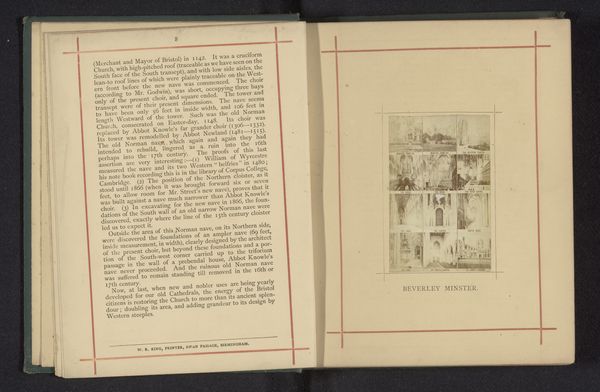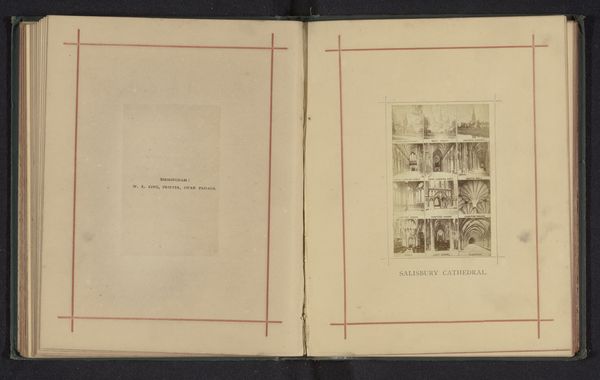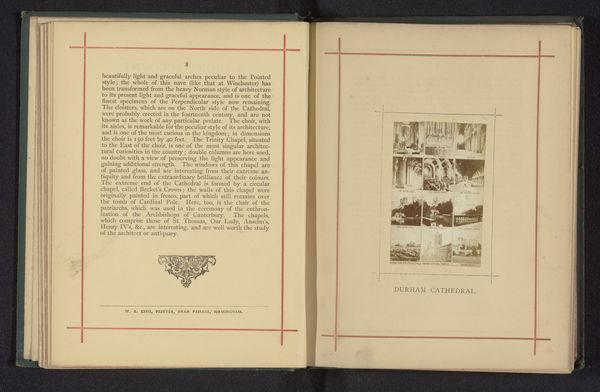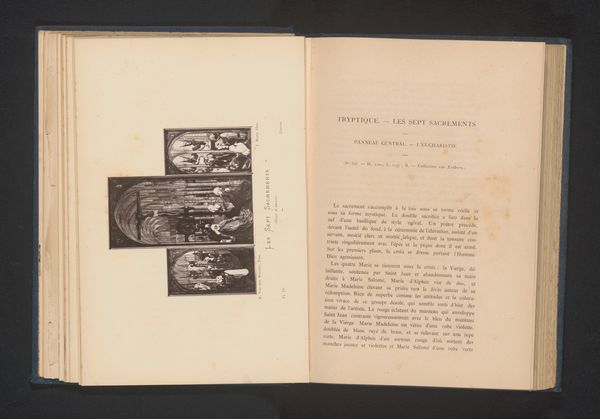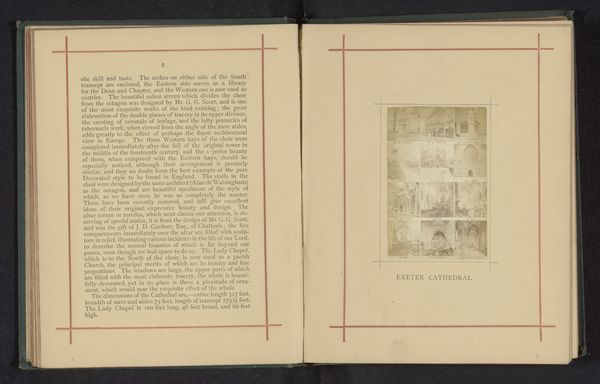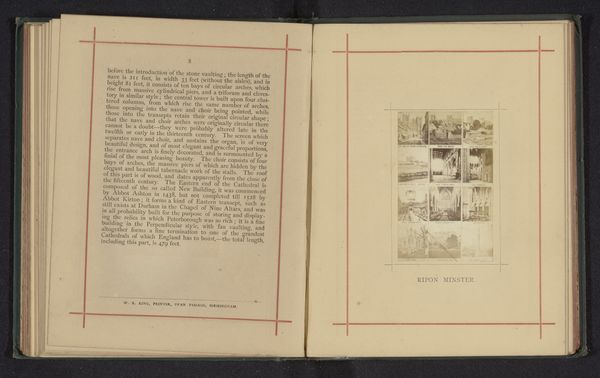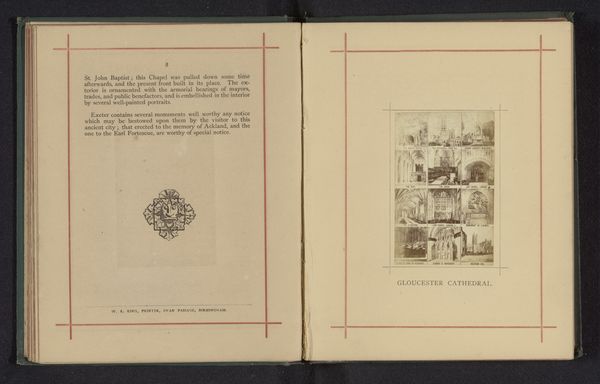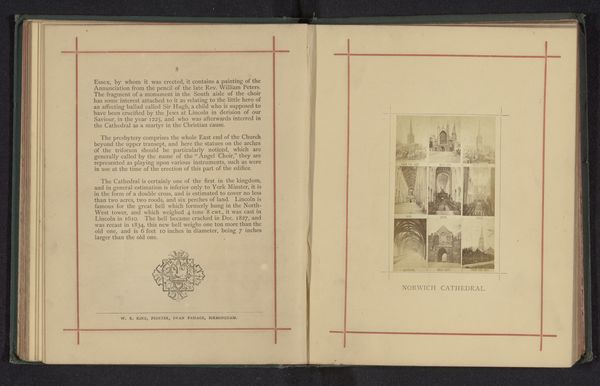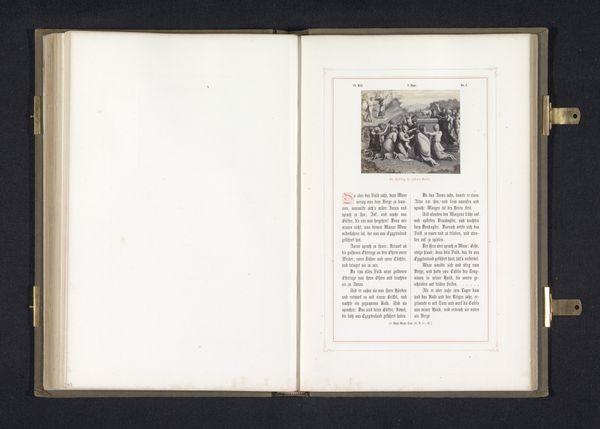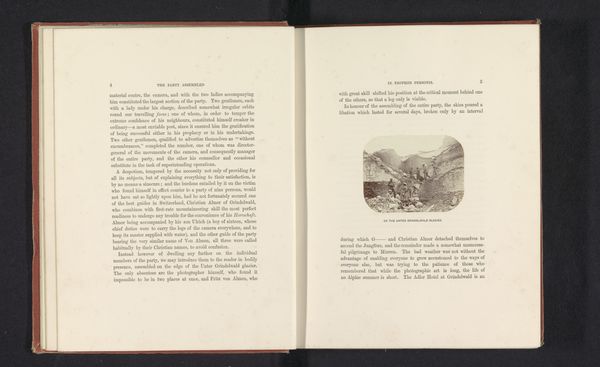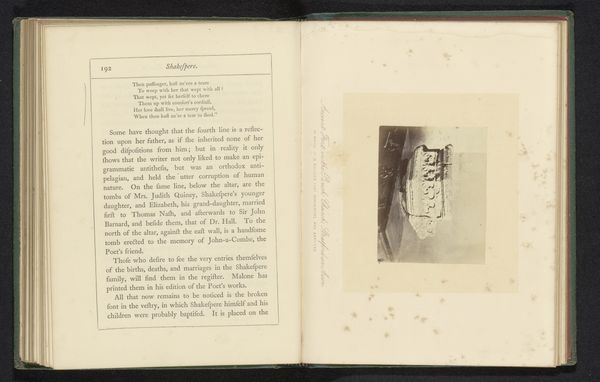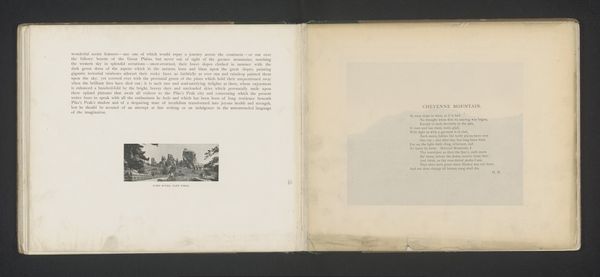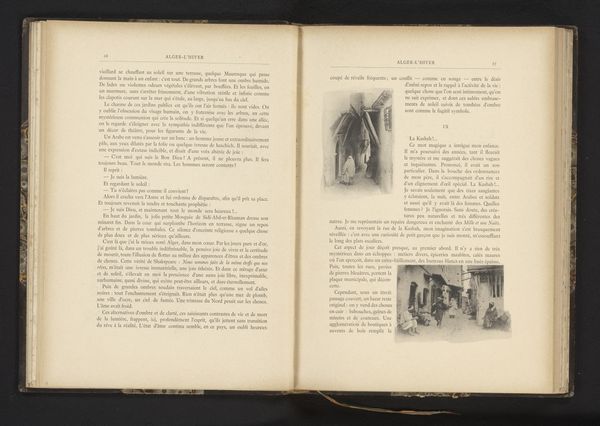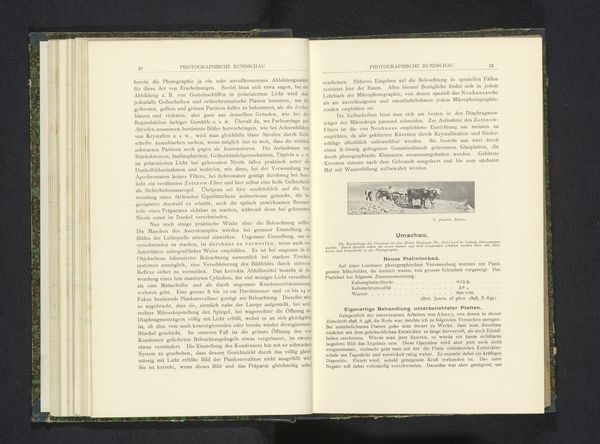
print, photography, architecture
#
portrait
# print
#
landscape
#
photography
#
architecture
Dimensions: height 84 mm, width 54 mm
Copyright: Rijks Museum: Open Domain
Editor: Here we have a print from before 1880, "Fotoreproductie van twaalf foto's van de kathedraal van Lichfield," made through photography by Ch. Pumphrey & Co. It features a collage of images inside what seems to be an open book. I find it so interesting to see these early photographic reproductions of architecture. What historical context am I missing here? Curator: This photobook speaks to the 19th-century obsession with documentation and dissemination of architectural wonders. Lichfield Cathedral, like many significant structures, became a subject of public interest and national pride. What’s crucial here is understanding the social function of these images. Who was this book intended for, and how did it shape perceptions of British identity? Editor: It’s amazing how accessible photography made these places seem! But were these kinds of reproductions meant to be artistic expressions or something else? Curator: The question is valid: was it primarily artistic, or was it something else? These photographic prints served a multifaceted role. Beyond aesthetics, they catered to the burgeoning tourism industry and reinforced a sense of shared cultural heritage. Notice the carefully chosen angles highlighting the cathedral's grandeur and emphasizing particular architectural details. Editor: So, the composition and framing choices contributed to a broader narrative. Curator: Precisely! They present Lichfield Cathedral as an emblem of national achievement and historical continuity, subtly promoting a specific political and social agenda through the popular medium of photography. What’s left out is just as important as what’s included, hinting at an idealized past. Editor: This makes me rethink my initial impression of it as a simple architectural study. Thanks, I now see how the choices in presenting the cathedral through photographs carry historical meaning. Curator: Indeed! And by understanding that meaning, we are better equipped to interpret the visual narratives constructed during this era.
Comments
No comments
Be the first to comment and join the conversation on the ultimate creative platform.
